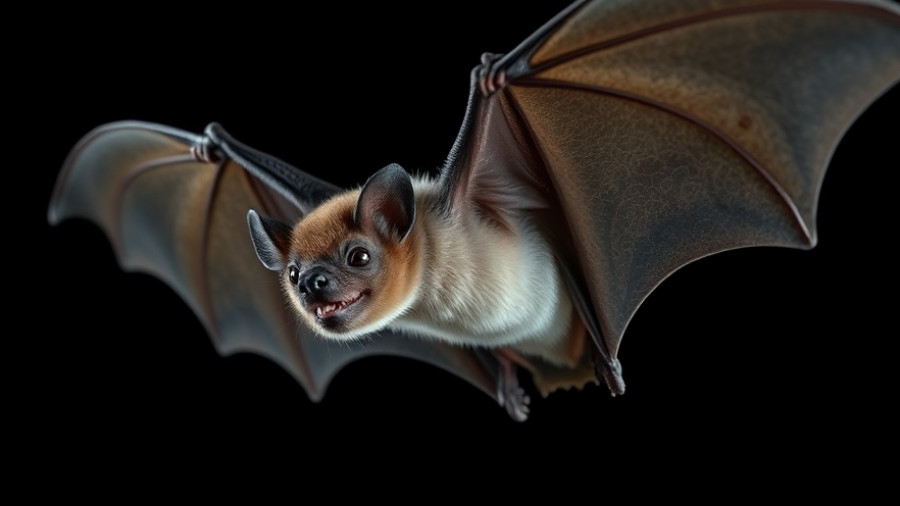
Discovering the Dark Predatory Side of Bats
Bats have long been viewed through a lens of fear and fascination. Typically associated with creepy, dark corners of attics or caves, these creatures have recently unveiled a surprising predatory prowess. A groundbreaking study has revealed the greater noctule bat, Europe’s largest bat species, exhibiting a remarkable hunting method by catching, killing, and consuming a migrating robin mid-flight. This shocking behavior challenges the common perception of bats as mere insectivores and compels us to explore the implications for wildlife and ecosystems.
The Thrilling Chase: Bats on the Hunt
In the described observation, a greater noctule bat ascended to 1.2 kilometers (4,000 feet) before making a rapid dive towards its prey. This chase lasted over 1 kilometer and included 21 distress calls from the robin, culminating in a chilling climax of a shriek heard moments before the bird's fate was sealed. The bat was not only able to catch its prey but continued to chew and consume it without descending, showcasing both its agility and adaptability. Dr. Laura Stidsholt of Aarhus University optimistically describes the feat as an extraordinary survival adaptation.
Birds' Migratory Patterns: An Overlooked Connection
As billions of birds migrate at night, the intersection of their flight paths with the hunting grounds of these bats has major implications. Scientific inquiry into this predation has been minimal, leading researchers like Dr. Carlos Ibáñez to corroborate decades of observations indicating that birds could serve as essential resources for these bats during critical seasonal phases. However, skepticism from the scientific community initially hindered focused research, emphasizing the need for additional studies on these predator-prey dynamics.
Ecological Impact and Future of the Greater Noctule Bat
The findings indicate a significant shift in understanding bat diets, potentially redefining their role within the ecosystem. As their natural habitats shrink due to climate change and human activity, what does this mean for the future survival of species like the greater noctule bat? While it’s tempting to feel empathy for the robin, it’s essential to remember that such hunts are vital for the bats’ survival and a natural part of the ecosystem. These predatory behaviors may increase in necessity as food sources dwindle.
Conclusion: Embracing Nature's Harsh Realities
The vision of bats swooping down on unsuspecting songbirds stretches the boundaries of our understanding of their ecological roles. As we learn more about their predatory nature, it forces us to ponder The complex interdependencies within wildlife communities. Researchers strongly believe that by supporting conservation efforts, we not only help these rare bat species thrive but also the delicate ecosystems they inhabit.
The intricacies of nature are often brutal, yet they elegantly underscore the interwoven tapestry of life. The next time you hear the flutter of wings overhead at night, consider that, while it may evoke a sense of fear, it's also a vivid reminder of the unpredictable dance between predator and prey.
If you’re passionate about wildlife conservation, consider donating to local initiatives aimed at preserving the delicate balance of our ecosystems. Every contribution counts!
 Add Row
Add Row  Add
Add 




Write A Comment